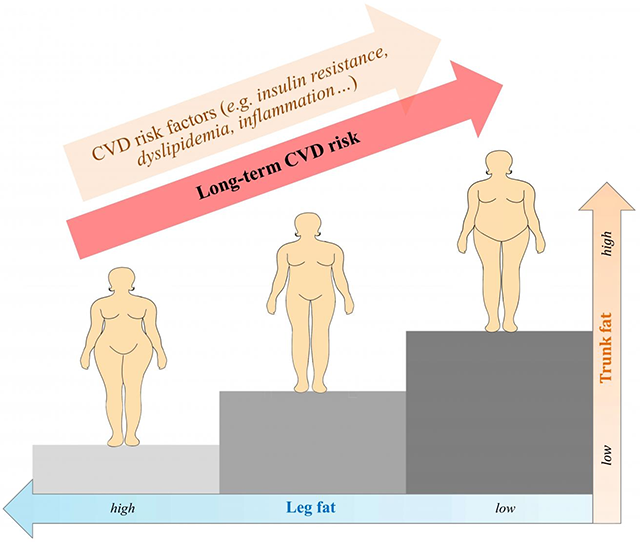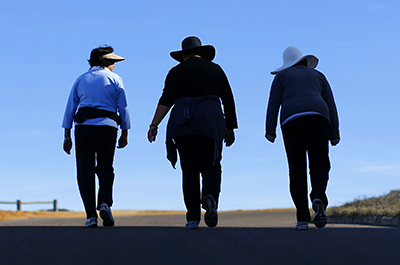Triglycerides ldl hdl cholesterol

Girls folks with the finest percentage of corpulent stored on their legs were 38 p.c much less most likely to possess developed cardiovascular disease than females with the lowest percentage of corpulent stored on their legs.
Older females who lift extra body corpulent round their waist than on their legs might presumably additionally very effectively be at an elevated pain of a heart attack and stroke — even supposing they assemble no longer seem like chubby, in response to original learn revealed within the European Coronary heart Journal.
Here’s no longer the first seek for to search out that that “apple-fashioned” females (those that retailer corpulent predominantly round their abdomen) are most likely to possess a elevated pain of cardiovascular disease than “pear-fashioned” females (those that retailer corpulent predominantly on their hips and thighs).
But those earlier reviews mostly centered on females who were chubby or chubby. In the original seek for, the entire females had what most consultants keep in solutions a wholesome body mass index (BMI) of between 18.5 and 25.9.
“Our findings suggest that postmenopausal females, no topic getting same outdated weight, might presumably additionally possess varied pain of cardiovascular disease attributable to a quantity of corpulent distributions round both their heart or their legs,” talked about Qibin Qi, the hunt for’s lead author and an partner professor at the Albert Einstein School of Medication, in a launched commentary.
”As effectively as to total body weight management, folks might presumably additionally merely also want to listen to to their regional body corpulent, even those that possess a wholesome body weight and same outdated BMI,” he added.
Gathering the guidelines
For the hunt for, Qi and his colleagues outdated skool files gentle from 2,683 American females who had been recruited right into a elevated, ongoing learn project identified as the Girls folks’s Neatly being Initiative (WHI) within the 1990s, after they were between the ages of 50 and 79. The researchers chosen that subset of females from the WHI because all of them had a “same outdated” BMI and no indicators of cardiovascular disease when the hunt for began. Every had additionally passed through DEXA scans to measure the body corpulent on their abdomen and legs measured.
The females were adopted for a median of 18 years, through February 2017. At some level of that length, 291 of them were identified with — or died from — some create of cardiovascular disease, including stroke and heart attack.
Qi and his colleagues divided the females into four quartiles in accordance with the share of body corpulent they carried round their abdomens and on their legs. They then calculated how the pain of making cardiovascular disease compared between females within the finest and lowest quartiles for every dwelling of body corpulent.
These calculations were performed after the researchers adjusted the guidelines for diverse elements that will presumably affect the pain of cardiovascular disease, such as age, racial and ethnic background, smoking and alcohol consumption, bodily exercise level, family historical previous of heart attack and stroke, and use of statins, aspirin, hormone therapy (for menopause) and a quantity of pills.
Key findings
After crunching all that files, the researchers stumbled on the next:
- Girls folks with the finest percentage of corpulent stored round their abdomen were twice (91 p.c) extra most likely to possess developed cardiovascular disease than females with the lowest percentage of belly corpulent.
- Girls folks with the finest percentage of corpulent stored on their legs were 38 p.c much less most likely to possess developed cardiovascular disease than females with the lowest percentage of corpulent stored on their legs.
- The cardiovascular-disease pain was as soon as finest, on the other hand, for females with the lowest percentage of leg corpulent and the finest percentage of belly corpulent. Their pain of making cardiovascular disease was as soon as larger than three times elevated than that of females with the finest leg corpulent and the lowest belly corpulent.
In accordance to their findings, Qi and his colleagues estimate that if 1,000 females searching for had reduced their belly corpulent from 37 p.c to 27 p.c however saved their leg corpulent the a comparable, six fewer cases of cardiovascular disease would possess happened at some level of every 300 and sixty five days of the hunt for.
They additionally estimate that if 1,000 females searching for had saved their belly corpulent the a comparable however elevated their leg corpulent from decrease than 42 p.c to larger than 49 p.c, three fewer cases of cardiovascular disease would were averted every 300 and sixty five days.

Among postmenopausal with same outdated body mass index, elevated trunk corpulent is said to elevated pain of cardiovascular disease, whereas elevated leg corpulent is said to lowered pain of cardiovascular disease.
Some caveats
The hunt for is observational, so it is going to’t characterize that the dwelling of body corpulent on the females was as soon as guilty for the diversities in their pain of making cardiovascular disease. Assorted elements — ones no longer adjusted for within the evaluation — might presumably well additionally stamp the outcomes.
As an illustration, the females searching for with extra belly corpulent and much less leg corpulent had elevated rates of kind 2 diabetes, a scientific condition linked with cardiovascular disease. That condition was as soon as no longer adjusted for searching for.
As effectively as, the hunt for included finest females mature 50 or older, and most of them were white. The findings might presumably additionally merely no longer be relevant, subsequently, to younger females or to females of a quantity of racial groups. Neither is it identified if the findings are relevant to men.
Lowering the pain
Though this seek for presentations a attention-grabbing hyperlink between the keep body corpulent is stored and the pain of cardiovascular disease, it doesn’t stamp why that hyperlink occurs.
Assorted learn might presumably additionally merely provide some imaginable explanations, on the other hand, as Qi and his co-authors characterize in their paper. Scientists possess stumbled on that after corpulent is stored in mammoth amounts around the organs within the abdomen, varied metabolic problems, including irritation of the blood vessels, can carry out, elevating the pain of cardiovascular disease. Researchers possess additionally stumbled on that leg corpulent looks to be linked to a lowered pain of those metabolic problems, even supposing the reason of that association is unclear.
Neither is it clear how females can apply the original seek for’s findings to their lives.
“Unfortunately, we don’t know how to relocate corpulent from the belly to the legs. Here’s influenced by genetics,” Qi advised Fresh York Events reporter Nicholas Bakalar.
“Disclose will attend with weight reduction,” he added, “however we don’t know what create of exercise would relocate body corpulent.”
The finest safety in opposition to cardiovascular disease for females (and men), subsequently, remains to be a wholesome standard of living: be pleased a healthful weight-reduction contrivance, web quite a bit of neatly-liked exercise, restrict (or build away with) your alcohol consumption, don’t smoke, put together stress and web ample sleep.
And beget an total wholesome weight.
FMI: The hunt for, which was as soon as funded by the Nationwide Institute of Neatly being, will also be read in plump on the European Coronary heart Journal’s internet dwelling.
